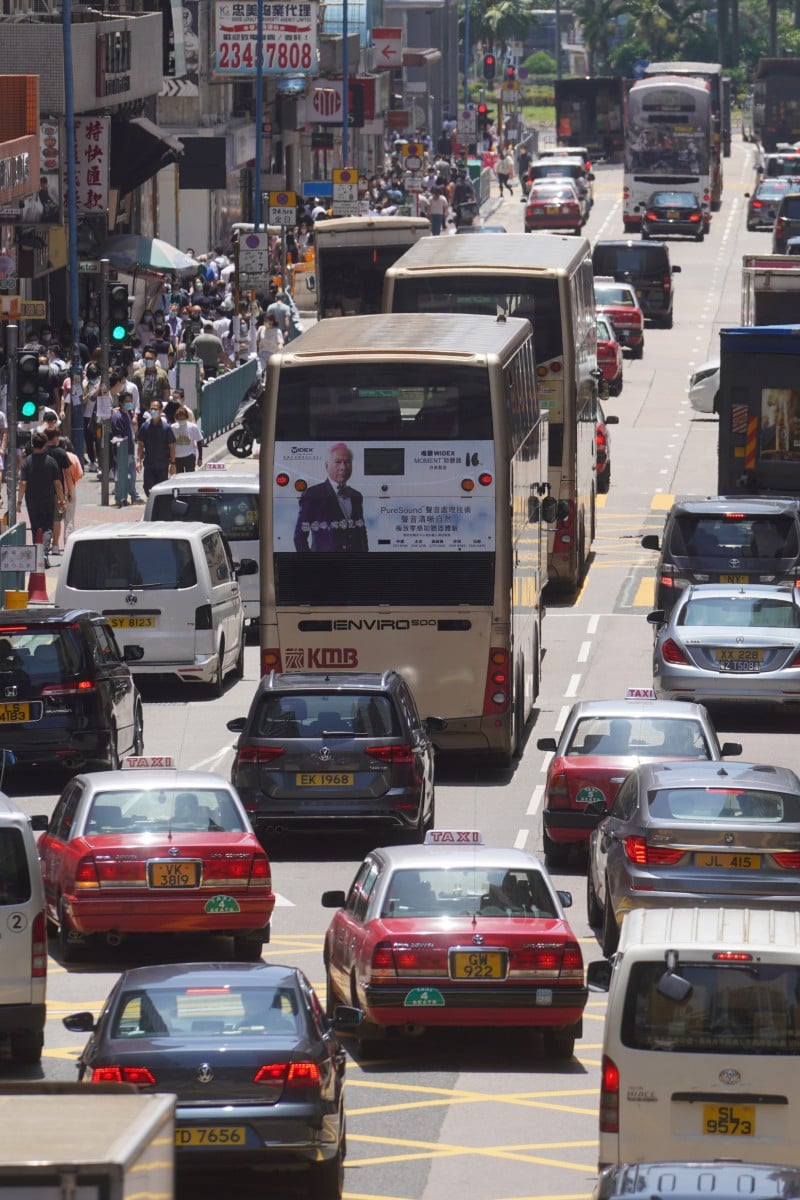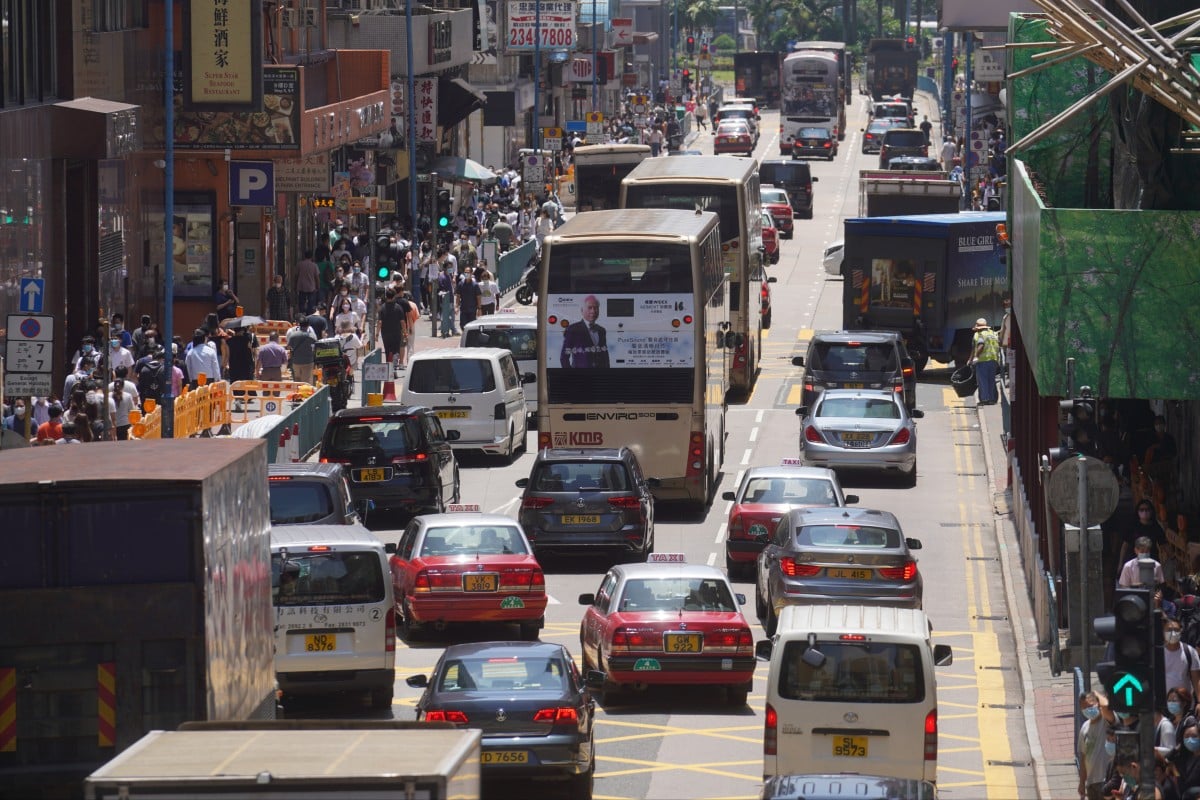
Spark Deep Dive: Hong Kong police use cameras, AI system to manage traffic
Cameras using AI technology in Kwun Tong can help monitor traffic, make light adjustments and warn drivers about accidents, force says.
 Eleven sets of CCTV cameras have been installed in Kwun Tong under a new AI traffic management system. Photo: Winson Wong
Eleven sets of CCTV cameras have been installed in Kwun Tong under a new AI traffic management system. Photo: Winson WongDeep Dive delves into hot issues in Hong Kong and mainland China. Our easy-to-read articles provide context to grasp what’s happening, while our questions help you craft informed responses. Check sample answers at the end of the page.
News: Hong Kong police install cameras in Kwun Tong under new AI traffic management plan
-
New project uses data from the Transport Department to monitor traffic and stay alert for accidents
-
Police force says the system will not feature facial recognition and data will be deleted after 28 days
Hong Kong police have installed surveillance cameras in Kwun Tong as part of a new real-time traffic management system.
The artificial intelligence (AI) system incorporates data from the Transport Department. It will monitor traffic in the area and make suggestions for traffic light adjustments.
The force said the system would only be used for traffic management. It would not feature facial recognition.
The pilot project is called the Smart Traffic Management System. It will launch in the third quarter of this year after receiving HK$6.8 million (US$874,900) in funding from a programme under the Innovation and Technology Bureau.
Eleven sets of cameras were set up across nine main streets in the commercial area of Kwun Tong, including Shing Yip Street and Hoi Yuen Road.
“The system is designed to focus on traffic data rather than capturing information about residents,” Chief Inspector Yu Shing-lam of the Kwun Tong police district said.
He said the data collected by the system would be deleted within 28 days.
Other related data, such as traffic flow information from the Transport Department, will be integrated into the system. It could help monitor traffic and manage traffic lights. It could also help police deploy manpower to incidents more quickly.
Yu said that if the system results were positive, authorities would consider extending it to other areas.
The development of the system started last April with help from the Hong Kong University of Science and Technology.
Ng Ka-fai is a senior research engineer at the university’s department of civil and environmental engineering. He said the system could collect and analyse data and alert users when accidents happen.
“The system also allows users to look back at the recorded previous road conditions,” he said. It would also use different colours to indicate areas with heavy traffic.
Police held a launch ceremony for the system and said final adjustments needed to be made before its application.
The first Smart Traffic Management System 1.0 was released in 2023.
It was a less advanced version that manually collected traffic data. It also employed scientific methods to develop strategies aimed at reducing manpower requirements.
Staff writers
Question prompts
1. According to the news, which of the following are true?
(1) The traffic management system will include facial recognition.
(2) Information collected by the traffic management system will be deleted in 28 days.
(3) The Smart Traffic Management System will be launched in 2025.
(4) Twelve sets of cameras were set up across six main streets in Kwun Tong.
A. (1), (2) only
B. (1), (3) only
C. (2), (3) only
D. (3), (4) only
2. Using the news, list TWO ways the Smart Traffic Management System could benefit commuters, police, and the Transport Department.
3. What is ONE potential concern about this technology? How has the Transportation Department addressed this worry?
Photo
Question prompts
1. What is being shown in this photo?
2. Using the information in the news, how could AI traffic management technology help this situation?
Glossary
surveillance cameras: video cameras used to watch or monitor an area. They are often connected to a recording device or the internet. They may be watched by a security guard or law enforcement officer.
facial recognition: technology that can match and identify a person’s face from a digital image or a video frame using a database of faces. It may be used by law enforcement, the military, or even in airports. It is also used to unlock your phone.
Innovation and Technology Bureau: the department of the Hong Kong government responsible for creating policies to develop the city’s technology sector and encourage innovation.
Sample answers
News
-
C
-
The Smart Traffic Management System will benefit commuters by alerting them about possible accidents and keeping them up to date on traffic flow. The system will allow police to monitor the traffic and traffic lights and quickly respond to accidents. Finally, this system can help the Transportation Department adjust lights to help traffic flow. It could also help the force interpret and capture data on traffic more easily. (accept all reasonable answers)
-
Some people worry this AI traffic system may collect their personal information. In response, the Transportation Department said the system would only look at traffic and not use facial recognition. Additionally, the system will delete the information it has collected after 28 days.
Photo
-
This photo shows cars going in and out of the cross-harbour tunnel. The cars on the left are stuck in a traffic jam and moving slowly, while traffic on the right is flowing.
-
If cameras were placed in the area, traffic management technology could inform drivers of a traffic jam around the cross-harbour tunnel, which may prompt them to leave a bit earlier or take a different route. Additionally, this technology would alert authorities of the jam, and they could monitor the situation to ensure there were no accidents. (accept all reasonable answers)
